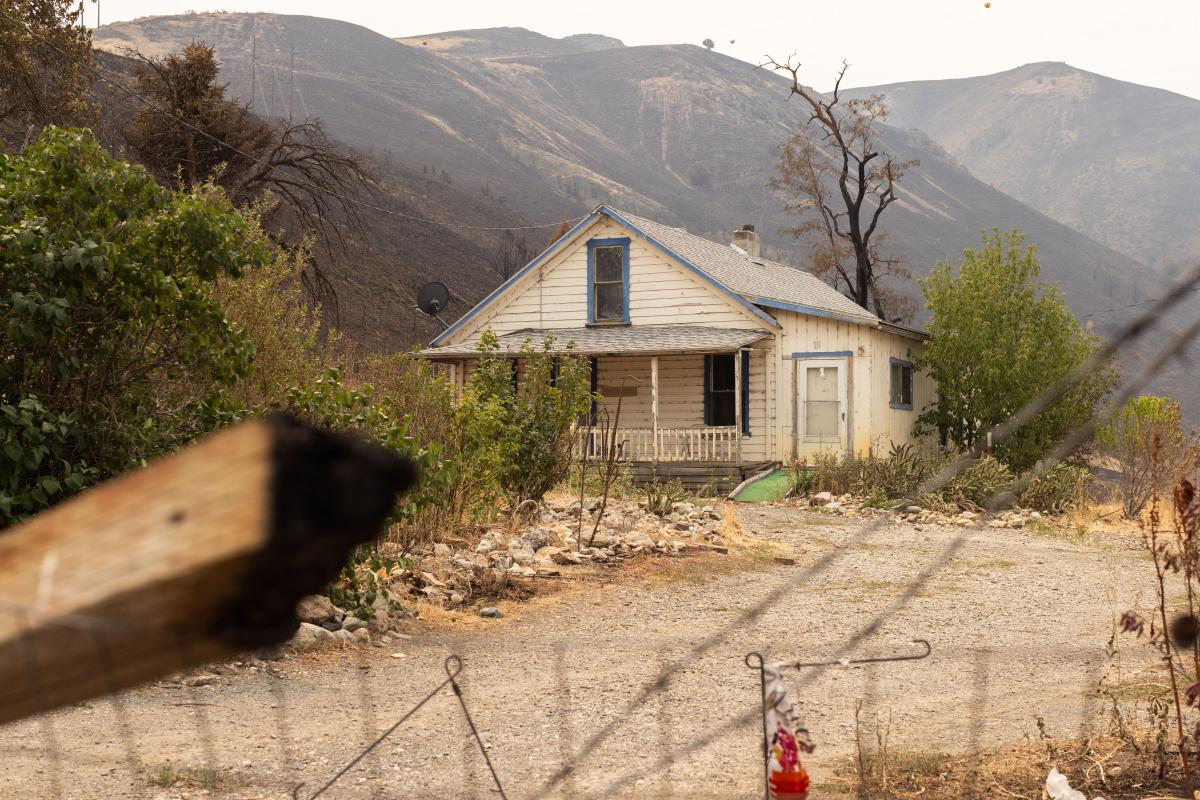What is the context?
Climate risk disclosure data educates – and divides – American homeowners
- Oregon creates new forest fire maps after public backlash
- New FEMA flood maps affect thousands of people in Florida
- Data is a double-edged sword for some homeowners
RICHMOND, Virginia – Dulce Suarez-Resnick, an insurance agent in Florida, often hears from people complaining that flood maps can result in new insurance costs for them, but their neighbors remain unscathed.
As data on climate risks becomes more widely available, U.S. homeowners now have the know-how to future-proof their most important asset. However, they may ultimately have to pay more to protect themselves against the potential impacts of rapid climate change.
“My client argued with me that her neighbor across the street doesn’t have to buy flood insurance and why does she have to,” she said. “I said, ‘Because it’s on the card and that’s why … your bank says so.'”
This is the double-edged sword that many Americans are currently facing: While a flood of data is giving people greater insight into their individual risk, this information has also sparked a fierce backlash over fears of the costs it could entail.
The state of Oregon is now in the process of redrawing its wildfire hazard maps, two years after abandoning a similar effort due to fear and anger over high home insurance premiums – even though insurers had indicated they would not use the maps for that purpose.
A new state law now officially prohibits insurers from using state maps as a basis for canceling or increasing the premium of a home insurance policy.
The goal of the new Oregon maps is to combine the best available data with the most accurate hazard calculations, says Andy McEvoy, a wildfire researcher at Oregon State University who helped design the maps.
“And given the advances in science, these things are complicated,” he said.
“I’m the first to admit that there are limitations to the data we have available across the state,” he noted.
“Apart from these limitations, it is nevertheless an objective process … to decide which communities, which properties, which regions … have the highest priority for us.”
A game of risk
Oregon released new draft wildfire hazard maps last month that reduced the number of hazard categories and took into account numerous local variables, such as the impact of the presence of hay, pasture or irrigation on hazard.
Ultimately, properties located in both particularly vulnerable regions and an area known as the “wildlife-urban interface” – where buildings border undeveloped land – could be subject to new regulations designed to help transform vulnerable areas into “defensible areas.”
“The stated purpose of the map is to inform Oregonians of the danger level where they live,” said Derek Gasperini, a spokesman for the state forestry agency.
A new state law prohibits insurers from using the maps as a basis for canceling or increasing home insurance premiums – although most insurers already have more detailed models for such decisions, Gasperini said.
According to the Oregon Department of Consumer and Business Services, the “home strengthening” standards would only affect new construction, major additions or improvements such as replacing a roof.
Officials have held a series of public meetings to explain what the new maps mean – and what they don’t.
Given the “new fire situation” the state is facing, proper mapping and communication of danger levels is critical, McEvoy said.
The risk of devastating wildfires and floods has increased as climate change contributes to increasingly severe storms in the United States.
“From my conversations with firefighters, they’re facing different types of fires and more fires than ever before, and there’s no future where that won’t continue for a while, right?” McEvoy said. “We have to adapt.”
“All this data”
Across the country, in Florida, weather risks vary, but concern about the data tells a similar picture.
New flood zone maps from the Federal Emergency Management Agency (FEMA) have been in effect since July. In Broward County alone, just north of Miami, an estimated 80,000 properties have been reclassified – a classification that brings with it new requirements and can affect the cost of flood insurance for residents.
Therefore, the accuracy of FEMA maps is crucial.
A full 78 percent of properties affected by Hurricane Debby, which swept across parts of the Southeast in early August, were outside of flood hazard areas designated by FEMA, according to the First Street Foundation, an organization that maps climate risks.
That means $9.7 billion of the $12.3 billion in estimated damage occurred outside of FEMA flooded areas, First Street found.
FEMA explained that it uses a different method than First Street to analyze risk and that its Flood Insurance Rate Maps (FIRMs) are not intended to predict where flooding will occur in the future.
“FIRMs are snapshots of the time of danger designed to identify minimum standards for floodplain management and the areas of highest risk for flood insurance,” Luis Rodriguez, chief of engineering and modeling at FEMA, said in a statement to Context.
“Floods do not follow lines on a map. Where there is a chance of rain, there is a chance of flooding.”
Preparation is key, and some states have now enacted strict new regulations for home building, such as requiring homes to be built a certain height above the flood plain.
However, in some areas the regulations may be exempt or construction companies may claim they do not have to comply with the regulations, Suarez-Resnick said.
“So there’s all this data, but no – there’s actually not all this data,” she said. “And that’s a problem.”
In addition, those most affected are often those who can least afford to make their homes more resilient.
“If your family is low-income or you’re a retiree on a fixed income, you can’t spend $7,000 or $8,000 on shutters,” Suarez-Resnick said.
“Either you pay for your medicine or food or you buy the protection, right?”
(Reporting by David Sherfinski; Editing by Lyndsay Griffiths)

